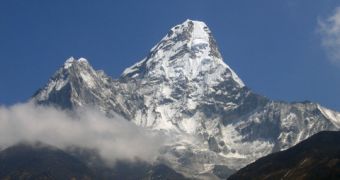Forty million years may seem a lot compared to a human life, but when it comes to the forming of a mountain range such as the Andes that's incredibly fast. A study published recently reveals that a typical mountain range could double its height in as little as two million years, a couple of times faster than suggested by the previous theories regarding the dynamics of plate tectonics.
Mountains can form on Earth through two distinct processes. Either through volcanic activity or through the uplift of the Earth's crust as two plate tectonics push against each other. The new theory regarding the latter is said to contain an additional process called 'delamination', which allows mountains to form much faster.
By developing a technique destined to measure the rainfall during ancient times and show how such precipitations altered the chemical composition of the soil in mountainous regions, Carmala Garzione from the University of Rochester along with John M. Eiler, professor of geochemistry at the California Institute of Technology and Prosenjit Ghosh, assistant professor of atmospheric and oceanic sciences at the Indian Institute of Science, were able to determine the altitude where ancient sediments had formed.
The results show that the Andes mountain range grew slowly in the first couple of tens of millions of year and then started a faster uplift in the past 10 million years or so. When corroborating the theory with the work of post-doctoral student Gregory D. Hoke, also from the University of Rochester, the results reveal that the phenomenon was not restricted specifically to the Andes but was also available for surrounding regions up to 560 kilometers away.
Hoke says that his findings are based on observations regarding the dating of the incisions and by mapping the depths and extents of the canyons of the same regions in the Andes studied by Garzione and her research team.
Additionally, other geologic indicators such as the folding and faulting of the crust, erosion, sedimentation and volcanic eruption seem to support a process called delamination, which was proposed a few decades ago although evidence to support it appeared to be scarce in models regarding the mechanics of mountain growth, as well as the lack of paleoelevation measurements.
Garzione explains that when oceanic and continental tectonic plates meet, they start pushing against each other causing the continental crust to buckle under the stress. Meanwhile, under the buckling a high density 'root' starts forming. The current theory regarding heat convection under plate tectonics says that this root will eventually be eroded by the movement of molten rock beneath it, which allows the crust to rise even further up.
The delamination theory on the other hand says that instead of eroding away, the high density root drips downwards into the mantle until it completely breaks away from the crust, which triggers a sudden rise in height in only a couple of million years.

 14 DAY TRIAL //
14 DAY TRIAL //